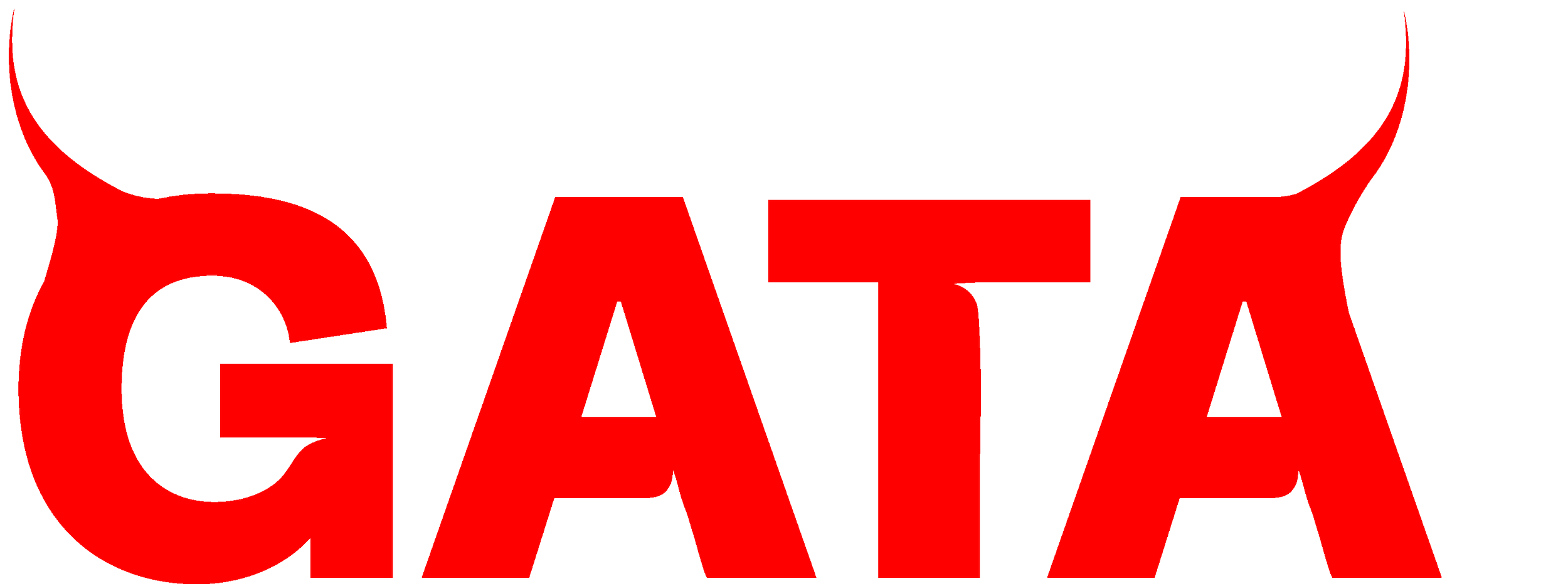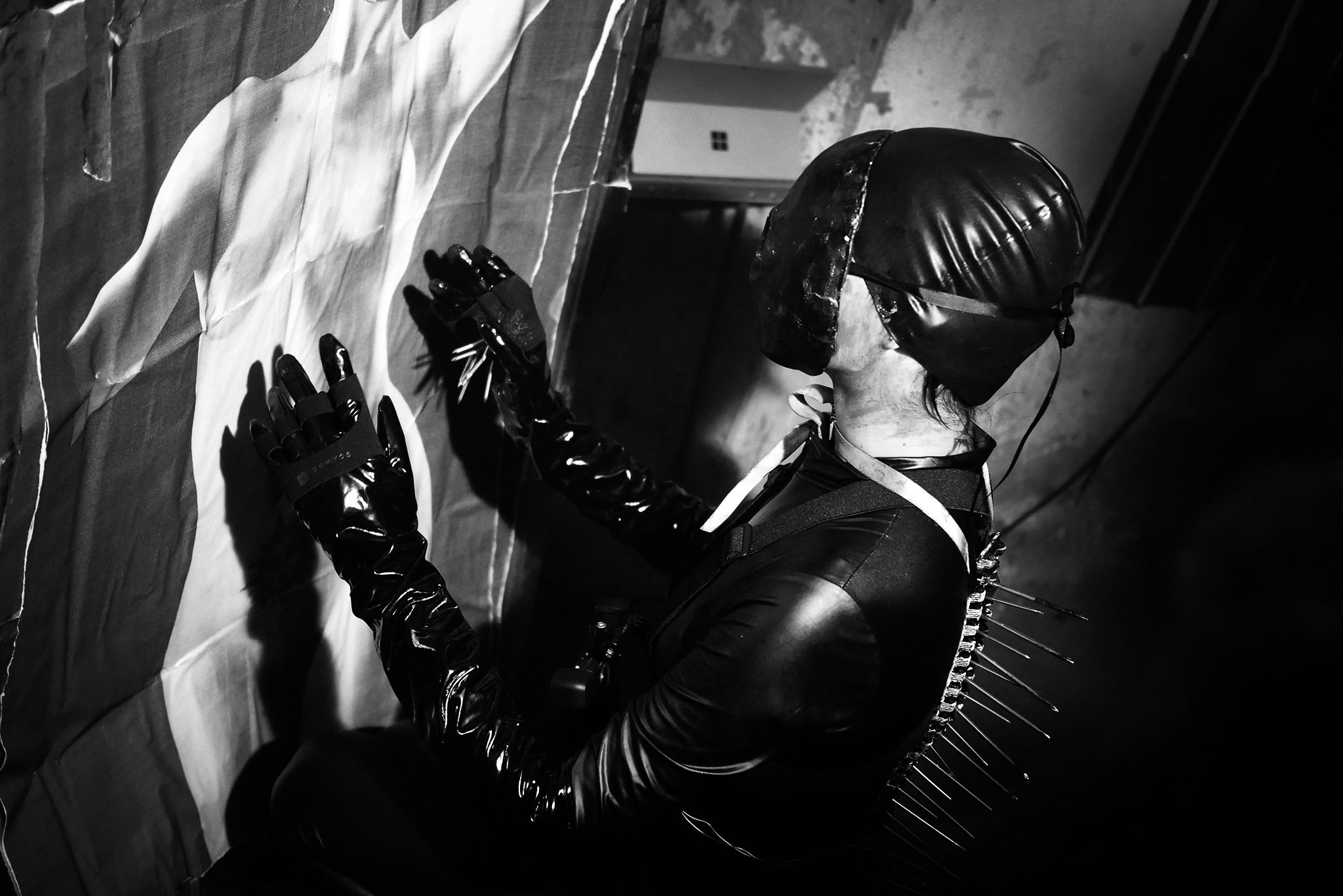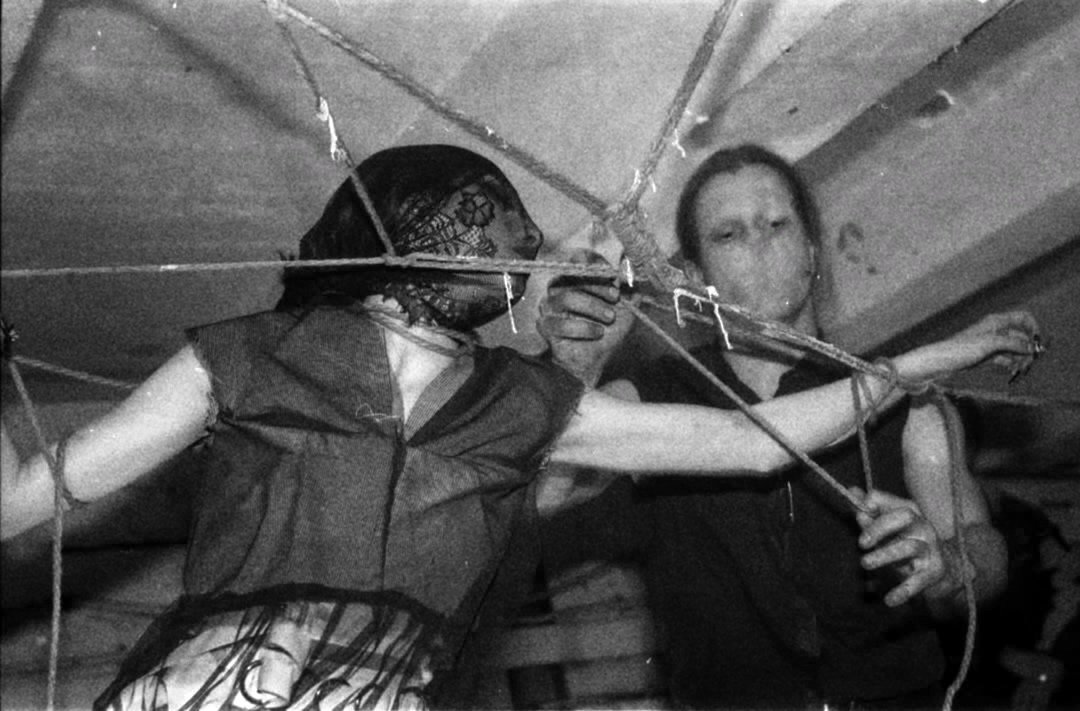SUFFERING FROM CHRONIC ILLNESS: GATA VISITS THE DUNGEON OF POLYMORPHOUS PAN
Recently, GATA made their way to explore the real London Dungeon on the Holloway Road. We visited Chronic Illness, which is more than an event, it’s a space for collective experiencing of our deepest fears and desires. According to Piotr Bockowski, the founder of the event and curator of the space, “‘Chronic illness’ (of unknown origin) doesn't reference any specific medical condition but rather introduces a variety of trans-corporeal approaches to the human body. (...) The notion of chronic illness conceptualises bodies that are not complete or harmoniously static; they are chimerical, unevenly distributed, vulnerably porous and involved in dynamic transformations of unknown intensities.” (Bockowski, P. (2024) ‘The Dungeons of Polymorphous Pan’, in Fungi media: Performing fungosexual mutations. London : Open Humanities Press, pp. 121.)
The space which hosts the performances, is a sewage underneath a squatted bookstore, which has been occupied by Piotr and his community for over a decade. The dungeon bears a symbolic name of ‘Polymorphous Pan’, which refers to the spaces’ mutability.
What feels like a modern day ritualistic gathering is a night filled with ecstatic spectrum of emotions where the audience is sucked into the world created by the performing artists. Chronic Illness gathers those, who take their art to the extreme, who do not fit into the frames of what’s ‘acceptable’, who’s performances are too drastic for other venues to house them. The polymorphous Pan is a space where they can all experiment and flourish. There’s certain performers who come back regularly, like Hardly Human and Esther Morel, with their sado-masochistic visceral acts which challenge the threshold of physical pain and ecstasy. Apart from numerous audiovisual performances, there are multiple films screened throughout the night, which you can escape to whenever you get tired of seeing balls nailed to a blood covered wooden board. Though you can imagine the film programme is far from comforting.
Upon entering through a mysterious and unassuming doorway on the main road, we head straight for the sewage, where the acts are taking place. Do not wear your favorite heels or you might fall off the sketchy ladder leading down to what resembles a dungeon. The space is dark and misty, with a musty odor hanging in the dusty air. Our eyes are immediately drawn to the rope installation hanging under the low ceiling between the pillars. We’re told they’ve been installed for the later performances and our anticipation deepens.
The man behind the installation and concept, resident of the squat and shibari artist, Piotr Bockowski, spoke to us about his practice, the beginnings of chronic illness and the uncanny space which he calls home.
GATA: Hi Piotr, Could you introduce yourself to our readers?
Piotr: Hi, I consider myself to be a philosopher of biomedia; I want to understand not only human body and living material dynamics or ecologies as technologies of communication, but also other way around: technological mediations as processes of life, beyond humanity.
I practice philosophy in forms of theory-fiction, literature, film, fetish theatre and curation of performance art space. I’m based at a squatted sewage in London.
GATA: What would be the three words to describe your work?
Piotr: Infection, decomposition, insatiability.
GATA: It was impressive to see so many such involved performances back to back. The form you took with Chronic Illness, challenges the notion of what a cultural gathering is, creating a new venue for expression of sound, art and theatre. Can you tell me a bit about how Chronic Illness started, what was the original idea?
Piotr: Chronic Illness is a site-specific performance art event, located at a biocontaminated sewage space in Holloway, London, UK. Upon entering in back in 2015, my original idea was to use it specifically as a personal shibari studio for dirty BDSM practice. It is still used that way now, though it opened up for public performance art events, electronic music experimentation, immersive theatre, rehearsals of shows for other venues, multimedia and bio-art installations, filming and photo-shoots, as well as clandestine sex work if not other private excess of our performers.
GATA: You’ve been in this space for 10 years, that’s pretty impressive in the world of squatting. Is this your idea of ultimate freedom?
Piotr: The past decade of our occupation has been possible due to minimal negotiations with powers to be, putting up with the permanent state of uncertainty, acceptance of vulnerability at the basis of our living condition, no less so involving strategies of behavioural elusiveness, psychological adaptability and certain detachment from society. I guess there is some degree of freedom in remaining undefined, nevertheless it can be restraining in different way.
GATA: Chronic illness events and the community surrounding them feel like a self-sustained ecosystem. How much of it do you think stems from the squatting ethos/philosophy?
Piotr: There is always a limitation to concepts of “self-sustainability”. Contrary to similar concepts, I think that the excitement of Chronic Illness is fed by the unexpected visitors, the otherness that is called for by our narratives. The event takes place underground in the hollow of Holloway. To enter, performers and participants have to pass through a hole in the ground, which is otherwise closed for most of the time. I often think about the very act of opening the hole as the original gesture that creates an effect of vacuum, which sucks in yet unknown to me fantasies of others, their confused desires, which they act out in forms of shapeshifting routines, bizarre expulsions, or mysterious poetics. Chronic Illness has no “community” but rather an array of anomalies, which exist in discontinuity for a series of moments, generating radically unstable, unique phenomena. As possible compositions and relations between people shift, I wouldn’t call Chronic Illness an ecosystem—perhaps we only invade alien ecologies down there, mysterious environments that precede, extend, and eventually collapse our human cognition.
Experience of squatting is essential to Chronic Illness in the sense that it practices survival in urban ruins, and the sewage space is an industrial infrastructure that at the same time mediates the most primal discharge of humanity, defining it as a ‘community of excrements’. Squatting importantly explores that difficult “nature of waste” (waste as nature), which also becomes an underlying crisis of civilisation. Sensitivity to the transformative potentiality of decomposition can be a valuable ethos of squatting, which Chronic Illness aestheticises through eroticism of rot.
As mentioned above, I must add that there is no affinity of Chronic Illness with any common for squats leftist (socialist, marxist, collectivist, ect.) politics with their prescriptive ethics or pretentious identity constructs. Conceptual curation of Chronic Illness invites posthuman narratives and performances interrogating the body decoupled from narrow-minded moralistic agenda many squatted “community centres” excuse their existence with, apologetically so.
GATA: This space has informed a lot of the ideas you talk about in your book, fungi media. Was that the starting point or something you’ve thought about before entering the sewage?
Piotr: Fungi Media book (Open Humanities Press, London 2024) is an edited version of a philosophy research for University of London I conducted between 2015-2022. Speculatively, the research probes decomposition processes performed by fungi and translates them into cultural theory, no less so via experiments with post-Internet performance art of bodily mutations. I embraced that particular theatrical form, hijacking it for the purpose of philosophy beyond language, but importantly after the Internet and acknowledging various spectres of biotechnology introduced online. Most likely, both Fungi Media research and Chronic Illness performance space developed in parallel, feeding off each other. Thus, my sewage became a thought laboratory of dark vitalism.
GATA: You’ve been a Londoner for almost 2 decades, but you’re originally from Poland. When and how did you first encounter/get into shibari?
Piotr: I come from Szczecin, a Polish port on the border with the German capital Berlin, historically its access to the Baltic sea and partially its cultural satellite today, When I was in high school at the end of 1990s, Berlin used to host a vibrant Japanese butoh performance scene and around the year 2000 sometimes every week there was a performer visiting my hometown and few acts used shibari techniques as theatrical solutions. I have been attracted to sadomasochism from the early age and exposure to shibari practice gave me the ultimate sense of control over the body intensities with almost metaphysical insight into the anatomy of desire. Later, during my media culture studies, I became obsessed with Japanese cinema and other fetish media from Tokyo. I attended live shibari events only in 2009, when I moved to London first time, then in 2010 when I briefly moved to Tokyo and in 2011 in Berlin, then Hong Kong from 2012. Fetish events in those cities embodied my fantasies. Apart from a few odd attempts at the time, my more continuous practice started only upon return to London a decade ago, when I opened the dungeons at Chronic Illness sewage.
GATA: Are you completely self-taught? What was your journey?
Piotr: I mostly learnt shibari by looking at BDSM photographs and trying to imitate them. My understanding of the body comes from physical theatre, flow sports (thai chi, yoga, long distance cycling, mountain hiking), art modelling as well as violent dance. I also watched shibari video tutorials online. During the time of Bound shibari events at the Flying Dutchman, I repeatedly attempted to convince the organiser Nina Russ to become my teacher, but she refused after all. I really liked to watch her process. Later, I befriended Conor Aphilia, who runs his own professional shibari studio and shares his expert knowledge with me sometimes. Though, mostly my practice developed through experimentation with intimate performance partners involved in Chronic Illness, inspired by various BDSM iconography online.
GATA: Your shibari performance with Posy during the recent chronic illness was mesmerizing. You looked so locked inside your world while performing. How much of it is rehearsed vs improvised?
Piotr: Well, we actually rehearsed the show in its entirety only once, nevertheless we practiced both suspensions before on separate occasions. Moreover, miss Posy Chamberlain and I have been working very closely together for the past half a year, staging four shibari theatre shows so far (we are working on the next one very soon) and continuing a regular routine in between—what creates the ground for charged improvisation.
GATA: It felt intensely emotional and visceral but also quite ‘fashion’. You mentioned that Posy is launching a fashion brand soon and that the performance was your answer to the work you did for her fashion project before. What was the idea behind it?
Piotr: Posy, together with her Beijing partner Janet, launched the Nephila fetish fashion brand at Metamorphika studios just a week before the last Chronic Illness. Its concept focuses on a fantasy of a spideress, who weaves her excessive body extensions as projections of her desire. The last Chronic Illness theatre show, titled “Escape is a Trap”, frames Posy in such nephiliac extensions, a multilayered exoskeleton of a sort, which traps her body and turns it into a sacrificial fetish object, deconstructed performatively by me for the gaze of the spectators. We played with the idea of desire that becomes her cruel fate, as Posy gets trapped in three different layers of her wearable extensions and is abducted three times. Essentially, the show interrogates desire as a raw force behind the fashioned images, which had to be destroyed in stages, eventually exposing Posy’s naked body that in the end became my outfit – as I carried her away, wrapped around myself, escaping. Following the narrative, I guess Posy has to turn into my own trap that will destroy me as well, heh..
Anyway, we want to re-stage that show at other fetish venues in the near future, possibly also outside of London.
GATA: The ending, when you manically tore layers of hosiery covering her vulva felt really cathartic, especially with Jose’s music. You managed to create a beautiful arc between all 3 stages of the performance accentuated by the sound design. What role does sound play in your creative process? Do you start with it, or does it come after?
Piotr: The 3 stages of “Escape is a Trap” show presented different reinventions of spideress features, in correspondence to shedding of exoskeleton (the first voluptuous body extension tied to the surrounding columns), metamorphosis by hatching from abdominal egg basket (the second spiral body extension suspended upside down) and weaving of the spinnerets (violent ripples of skin tight third body extension, suspended from a pillar).
Jose Macabra’s live sound followed abovementioned stages, reflected in the structure of his musical composition. He incorporated sound of destruction of the materials, used in Nephila wearable set design. He also digitally processed voice recording of Posy’s moaning as well as her voice describing pornographic fantasies about our act. Jose invented the soundtrack mostly during our dress rehearsal, while witnessing the action.
GATA: Shibari is an extremely sensually charged and intimate form of art, do you see a difference collaborating with models that you feel more intimate with vs in a professional/emotionally detached setting?
Piotr: There is certainly an acute difference between tying intimate performance partners and tying strangers. I’ve created shibari outfits for art photoshoot models and suspended an array of random professional models for fashion shows – what did not allow me to develop visceral intensities, as I had to be careful not to touch them too much and at the same time make sure that they feel comfortable. Contrary to that, my intimate performance partners are used to our routines and I’m aware how much I can push them – I can also allow myself to improvise and be invasive with touch, what makes the acts more energetically charged.
GATA: What’s next? You mentioned your plans for video installation based on older work, is that something you want to focus on now?
Piotr: Indeed, my ongoing project “Invert Balcony”, based on script fragments from plays by J.Genet & K.Acker, will be an immersive theatre piece choreographed around a video installation dissecting a short movie I filmed at Chronic Illness sewage during lockdown. Disjointed scenes will be projected on interior surfaces of the space in a loop, and live performers will be re-enacting selected gestures of film characters, also on repeat. The subject of scenes and actions revolves around the paradoxical logic of power play between the characters. That show will have multiple sessions (probably 4 a day, on several different days), available to four participants at a time, in proportion to four live performers and four characters in the movie.
GATA: Anything you’d like to add, a message you haven’t had a chance to share?
Piotr: “Invert Balcony” (2025) will be the fourth short film directed by me at Chronic Illness sewage in conjunction with live performance acts. The previous films are: “Ancestor Parasite” (2019), “Bottom of the Well” (2021) & “Ogled” (2024) – all available for screenings at other events.
In the foreseeable future, I would like to involve performers who have joined Chronic Illness over the years, as well as possibly performers who are yet to join, in a production of a feature film. Come to our sewage if you are interested ~
WORDS AND INTERVIEW BY ZUZA NELLA










